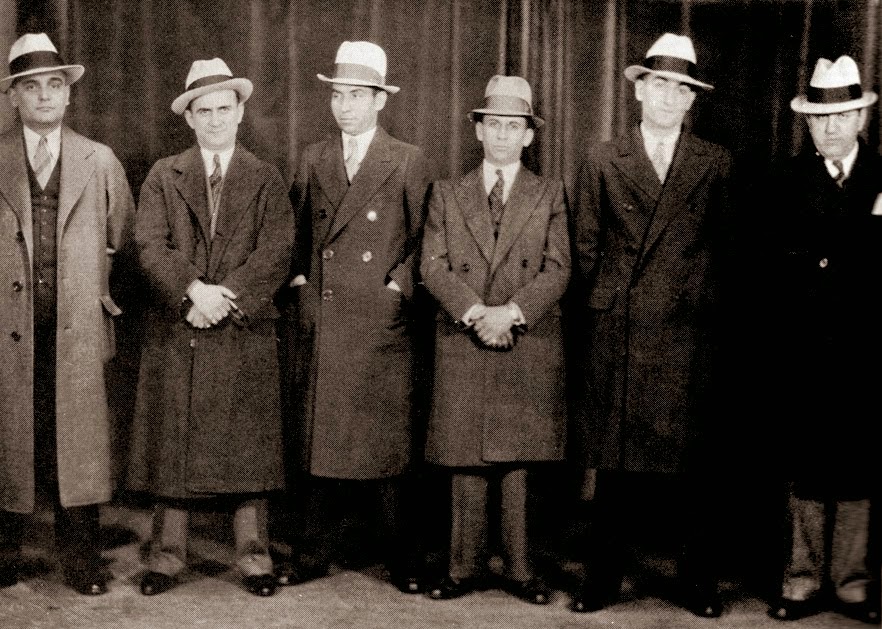In 1931, following decades of turf warfare, Brooklyn bootlegger Salvatore Maranzano established the leaders of New York City's five largest Italian American criminal organizations and declared himself capo di tutti capi — the "boss of all bosses." Maranzano's vision led to the formation of what became known as the Commission, a governing body that allowed for shared leadership among the families, fostering a level of stability within the turbulent world of organized crime.
Gambino Family: Power and Infamy
The Gambino family, one of the most notorious of the Five Families, has a rich and violent history. A longtime rival to the Genovese family for dominance, the Gambinos produced colorful figures such as Albert Anastasia and John Gotti. Anastasia is known for orchestrating the disappearance of Vincent Mangano, the family's first leader, while Gotti gained notoriety for his flamboyant lifestyle and leadership style, culminating in the infamous assassination of his predecessor, Paul Castellano.
Throughout the years, the Gambino family has been involved in numerous criminal activities, including racketeering and murder. In 2008, law enforcement made headlines with the arrest of over five dozen members of the family on federal racketeering charges. More recently, the assassination of acting boss Frank Cali in 2019 highlighted the ongoing influence and volatility of the Gambinos in the modern era.
Lucchese Family: A Model Organization Turned Violent
The Lucchese family was once viewed as a model organization, operating under the leadership of Tommy Gagliano and Tommy Lucchese. Both leaders understood the importance of avoiding the limelight during Prohibition, allowing their organization to thrive quietly. However, the family’s reputation changed under Carmine Tramunti, who was convicted for his involvement in the French Connection heroin smuggling ring in the 1970s.
Following Tramunti, Anthony "Tony Ducks" Corallo led the family into notoriety, especially with the infamous 1978 Lufthansa Heist. Though Corallo was convicted during the Mafia Commission Trial of the mid-1980s, his successors, Vic Amuso and Anthony "Gaspipe" Casso, brought an era of extreme violence. Amuso's reign ended when his lieutenant became an informant in the early 1990s, exposing the family's inner workings.
Genovese Family: The Ivy League of Organized Crime
Often referred to as the "Ivy League" of organized crime, the Genovese family has held a significant place in the world of organized crime. Originally led by Lucky Luciano, the family expanded its operations into Las Vegas under Frank Costello. Vito Genovese later took control, although his reign was cut short by a narcotics conviction in 1959.
The final decades of the 20th century were marked by the leadership of Vincent "The Chin" Gigante, who was known for his eccentric behavior meant to conceal his leadership role. This included wandering the streets in a bathrobe to convince authorities of his insanity. The Genovese family's ability to maintain a low profile while exercising considerable power over various rackets, including labor unions, has kept them at the forefront of organized crime.
Bonanno Family: Scandals and Resilience
The Bonanno family is one of the oldest and has faced numerous scandals throughout its history. Founded by Joe Bonanno, the family came under scrutiny after a series of violent power struggles known as the Banana War. Despite this turmoil, the family managed to regain its footing under Big Joey Massino, who made headlines as the first New York crime boss to become an informant.
FBI agent Joe Pistone's undercover work, resulting in over 100 convictions, showcased the vulnerabilities within the Bonanno family. However, they have demonstrated resilience, adapting to the changing landscape of organized crime while continuing to hold significant influence in illicit activities.
Colombo Family: From Humble Beginnings to Infamy
The youngest of New York's Five Families, the Colombo family was founded in 1928 by Joe Profaci. Though he began as a legitimate businessman, Profaci’s operations soon expanded into extortion and narcotics. This set the stage for internal conflicts, most notably with "Crazy Joe" Gallo, which would lead to a series of violent power struggles.
After Profaci's death, the family saw a shift in dynamics under Joe Colombo, whose publicity-seeking ways brought unwanted attention. The Colombo family faced civil war in the 1990s, primarily due to leadership struggles with Carmine Persico. Despite these challenges, the family has maintained control over various unions, ensuring its survival in the organized crime landscape.
As the saga of the Five Families continues, their influence and operations remain a subject of interest for law enforcement and the public alike. The complex relationships and rivalries among these families have shaped the American Mafia's evolution, making it a fascinating topic for exploration.
Understanding the history and impact of these families is crucial for anyone interested in organized crime, law enforcement, or American history. Their stories reflect not only the darker sides of ambition and power but also the resilience of human nature in the face of adversity.
Unveiling The Legacy Of Howard Carter: The Man Who Discovered King Tut's Tomb
Henry Kissinger: A Life In Diplomacy And Controversy
Mila Kunis: A Journey From Immigration To Hollywood Stardom


